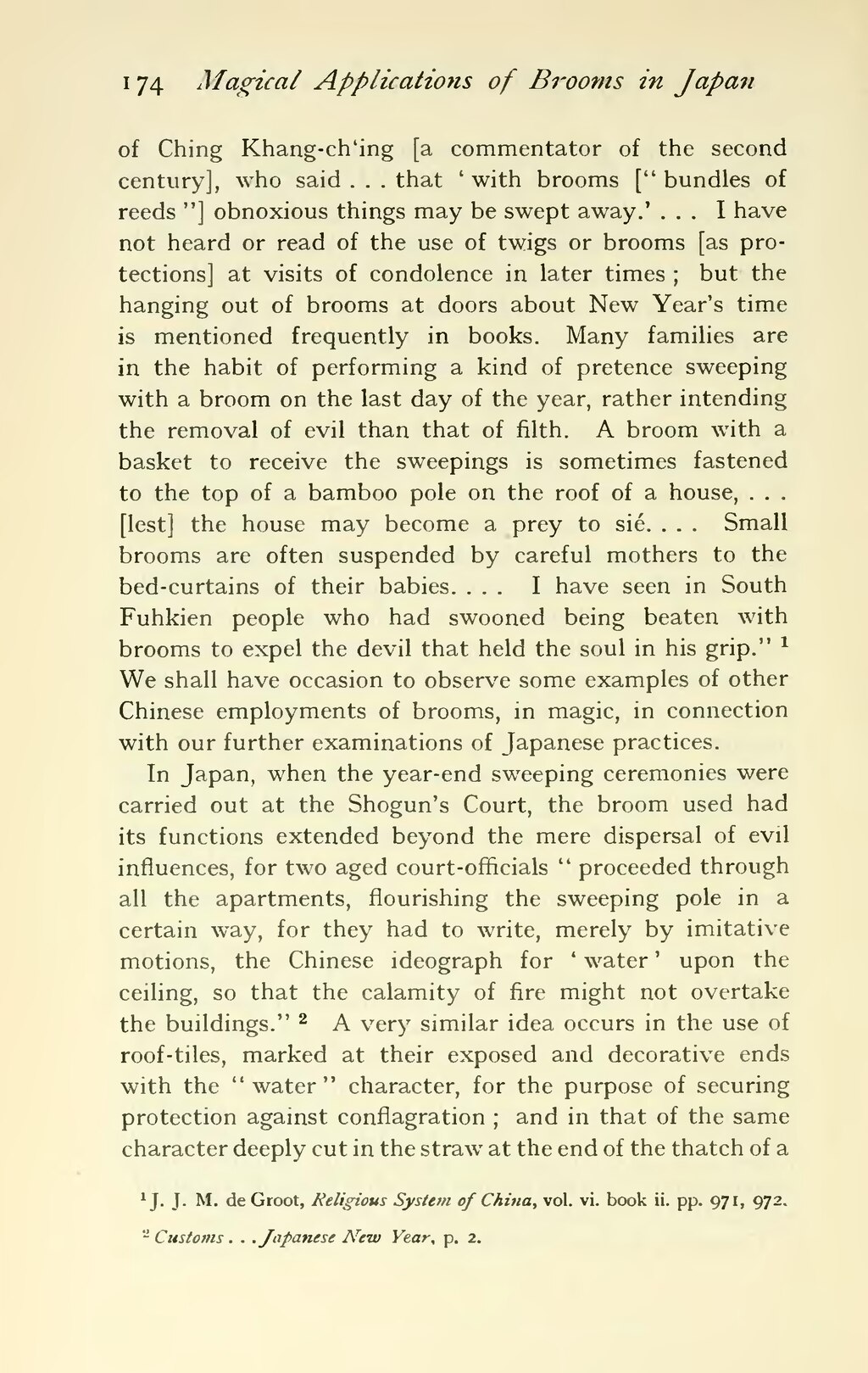of Ching Khang-ch'ing [a commentator of the second century], who said … that 'with brooms ["bundles of reeds"] obnoxious things may be swept away.' … I have not heard or read of the use of twigs or brooms [as protections] at visits of condolence in later times; but the hanging out of brooms at doors about New Year's time is mentioned frequently in books. Many families are in the habit of performing a kind of pretence sweeping with a broom on the last day of the year, rather intending the removal of evil than that of filth. A broom with a basket to receive the sweepings is sometimes fastened to the top of a bamboo pole on the roof of a house, … [lest] the house may become a prey to sié. … Small brooms are often suspended by careful mothers to the bed-curtains of their babies. … I have seen in South Fuhkien people who had swooned being beaten with brooms to expel the devil that held the soul in his grip."[1] We shall have occasion to observe some examples of other Chinese employments of brooms, in magic, in connection with our further examinations of Japanese practices.
In Japan, when the year-end sweeping ceremonies were carried out at the Shogun's Court, the broom used had its functions extended beyond the mere dispersal of evil influences, for two aged court-officials "proceeded through all the apartments, flourishing the sweeping pole in a certain way, for they had to write, merely by imitative motions, the Chinese ideograph for 'water' upon the ceiling, so that the calamity of fire might not overtake the buildings."[2] A very similar idea occurs in the use of roof-tiles, marked at their exposed and decorative ends with the "water" character, for the purpose of securing protection against conflagration; and in that of the same character deeply cut in the straw at the end of the thatch of a
- ↑ J. J. M. de Groot, Religious System of China, vol. vi. book ii. pp. 971, 972.
- ↑ "Customs … Japanese New Year, p. 2.
